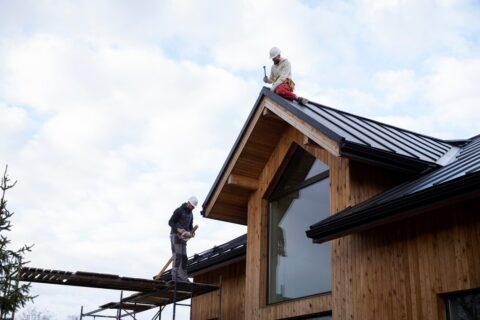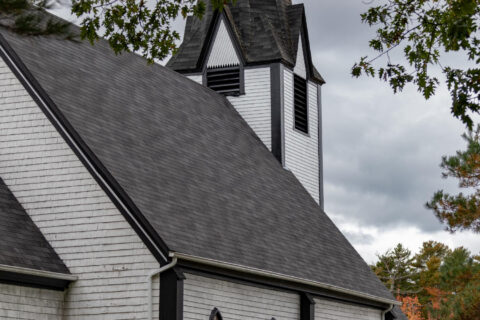Tips for Clearing Snow Off Your Roof Safely
In Ottawa, snow-laden winters are a staple of the season. While the white blanket looks beautiful, too much snow can cause problems for roofs. The weight of heavy snow can strain your roof, leading to potential damage if not addressed promptly.
Clearing snow off your roof is important, but it’s also risky. Knowing the right way to remove snow safely is essential. This can prevent damage to your roof and avoid personal injuries. You don’t want to scramble at the last minute when heavy snow piles up.
Understanding why snow removal is necessary and how to do it correctly can make a huge difference in maintaining your home’s structural integrity during winter. With the right tools and techniques, you can keep your roof in good shape while ensuring your safety.
Assessing the Need for Snow Removal from Your Roof
Before you tackle snow removal, it’s important to see if your roof needs it. Snow can be heavy, and the weight can cause problems. Not all roofs require snow removal after every snowfall, so knowing when action is necessary is key to protecting your home.
First, consider the type and slope of your roof. Flat and low-pitched roofs hold more snow, which can lead to stress and potential leaks. Steeper roofs usually shed snow more efficiently, reducing the need for frequent removal.
If you live in an area with more frequent heavy snowfalls, like Ottawa, regular checks are wise. Look for signs like sagging sections or cracks in the ceiling indoors—these may indicate too much weight on your roof.
Keep an eye on snow depth. As a general rule, if snow exceeds 15-20 centimetres, it’s time to consider clearing it. Wet snow is heavier than powdery snow, so even a smaller amount can cause trouble.
Also, examine your roof’s surface after every major storm. Weak spots or past damages increase the risk of snow buildup causing harm. By understanding these factors, you can decide when you genuinely need to clear snow off your roof.
Essential Tools and Equipment for Safe Snow Clearing
Having the right tools makes snow removal safer and easier. Choose equipment carefully to avoid damaging your roof or putting yourself at risk. Here’s a handy list of essential tools for clearing snow off your roof effectively.
1. Roof Rake: A roof rake is a must-have. Look for one with a long handle to reach high spots while standing on the ground. Opt for a rake with wheels or rollers to avoid scraping or damaging shingles.
2. Snow Cutter: For roofs with heavier snow, a snow cutter can help break up dense layers into manageable sections. This tool reduces the effort needed to clear packed snow.
3. Extendable Shovel: An extendable shovel can be useful for lower roofs or hard-to-reach areas. Make sure it has a non-abrasive edge to protect the roofing material.
4. Safety Gear: Never underestimate the importance of safety gear. Equip yourself with sturdy, non-slip boots to keep a firm footing on icy surfaces. Safety goggles shield your eyes from falling snow or ice shards.
5. Step Ladder: A stable step ladder is useful for accessing low roofs. Choose a ladder with rubber feet to prevent slipping. Always ensure it’s set on a level surface before use.
Collect these essential tools before the snow hits. Proper equipment makes the job quicker, more efficient, and ensures you stay safe while protecting your roof from damage.
Step-by-Step Guide to Removing Snow from Your Roof
Removing snow from your roof is a task that requires care and patience. Follow these steps to do it safely and effectively, protecting both your roof and yourself.
1. Check Weather Conditions: Pick a clear day to avoid working in slippery conditions. Make sure there’s no wind or precipitation that could make the task more dangerous.
2. Prepare Your Tools: Gather your roof rake, shovel, and safety gear before you start. Having everything ready will keep the process smooth and efficient.
3. Start from the Edge: Begin removing snow at the roof’s edge and work your way upwards. This prevents snow from piling onto already cleared sections which can add weight and risk.
4. Use the Roof Rake: Stand safely on the ground and use your roof rake to pull off layers of snow gently. Avoid scraping the roof surface to prevent damaging shingles.
5. Clear Small Sections: Work in small sections to keep control of the snow’s movement. Overloading a single area can cause damage or make you lose your balance.
6. Check for Ice Dams: Pay attention to any ice along the eaves. Use the roof rake to gently break them up, but be careful not to hit the roof’s surface.
By following these steps, you can effectively remove snow without causing damage or putting yourself in harm’s way.
Safety Tips and Precautions to Avoid Accidents
Clearing snow from your roof can be hazardous if precautions aren’t taken seriously. Ensure safety measures are in place to minimize risks while protecting your home.
- Stay Grounded: Whenever possible, perform snow removal from the ground using a roof rake. Climbing onto a snowy roof increases the chance of slipping and falling.
- Wear Proper Gear: Dress in non-slip boots and gloves to keep warm and maintain grip. Safety goggles protect your eyes from snow glare and falling debris.
- Use a Stable Ladder: If using a ladder, confirm it’s on a stable, flat surface and extend it three feet above the roof line. Always have someone hold the ladder at the base for added stability.
- Avoid Power Lines: Be aware of overhead power lines when using tools with extendable handles. Contact with power lines can be extremely dangerous.
- Check Yourself Regularly: Take breaks to avoid fatigue, which can lead to accidents. Hydrate and snack to maintain energy levels when working in cold conditions.
These precautions help keep you safe while performing essential snow removal tasks.
Conclusion
Protecting your roof from heavy snow is about more than just clearing the white stuff away. It involves understanding the risks, using the right tools, and respecting safety measures to ensure both your safety and home are maintained through Ottawa’s challenging winters.
If reading this has made you realize your roof might need professional care, consider reaching out to Magnum Roofing. Our team is ready to help with safe and effective solutions to manage the winter weather challenges for your home. With our expertise in residential roofing services in the Ottawa region, we ensure your roof can withstand the toughest of winter storms.


